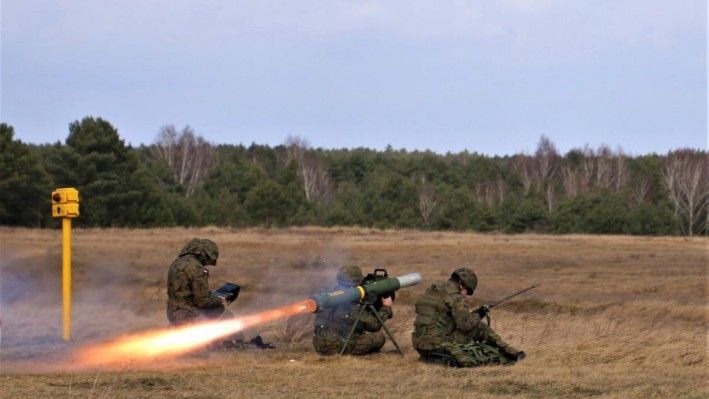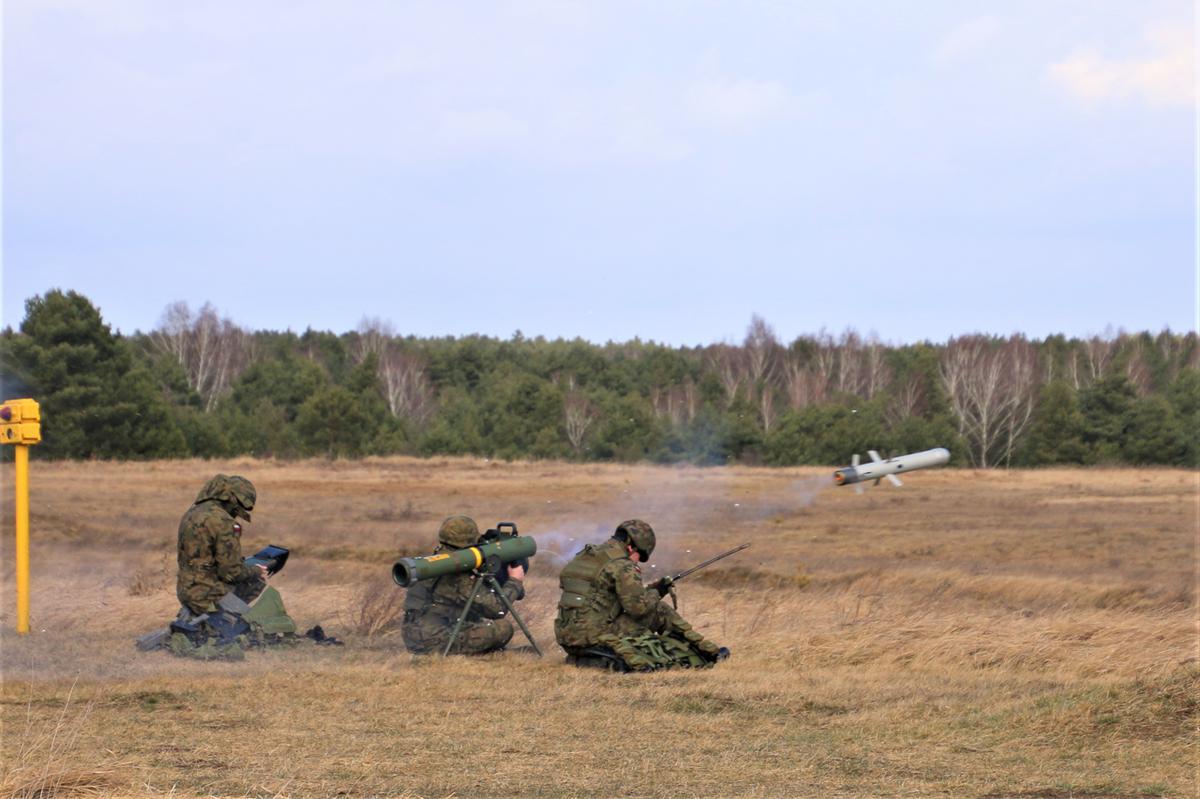Poland Deploys Spike ATGM to Suwalki Gap

Soldiers of the 14th Anti-Tank Regiment have received Spike-LR ATGMs to complement their inventory. The first live firing event has taken place already.
As mentioned by the press department of the regiment, the superiors decided to equip the unit with the Spike ATGM. The first firing event took place on 12th February. The above brought the third stage of training to its completion. Phase one involved theoretical and practical training too. It took place at the Thorn Artillery and Armament Training Centre. It lasted for four weeks.
Theoretical classes were finalized with an exam that gave the participants a credential to work on the “IDT” and “ODT” training devices. The whole practical training was finalized with an exam involving practical and theoretical skills. Another stage was the training at the unit. During that training, two soldiers got an approval to fire live Spike ATGMs.
The soldiers completed the task no. 1 (engagement against a fixed target) with a “very good” rating – this is not a norm during the first firing, as the course leader noted. The whole undertaking was supervised by an instructor hailing from Thorn, where the Polish army’s artillery training centre is located, who was preparing the soldiers for the event, theoretically and practically. Before the live-fire event, each of the operators carried out the firing procedure in CCD mode, with the use of the daytime camera, and in the IR mode, with the use of a thermal imaging system, on an external trainer.

The Suwałki-based regiment has begun further training activities covering the tactics involved in the use of the Spike-LR ATGM. The introduction of armament as such would become a very relevant capability reinforcement for the unit. Up until now, the element has only been using the obsolete 9P133 Malyutka systems – a self-propelled launcher using a BRDM-2 platform as the carrier.
According to decisions made by the MoD, 14th Anti-Armour Artillery Regiment has been, since 2019, formed on the foundation established by the 14th Anti-Armour Artillery Squadron. Noteworthy, the 14th Regiment became a Squadron in 2010, when the 9P148 Konkurs systems have been withdrawn without any replacement – Malyutka systems became the only asset available.
In a longer run, the unit will also probably receive modern self-propelled ATGM systems. However, the introduction of the portable Spike-LR systems is a usable reinforcement of the unit’s potential. The element is stationed near the so-called Suwałki gap – the border between Poland and Lithuania that is the only land connection between the Baltic member states and NATO.
Spike-LR ATGMs have been used by the Polish military since 2004. They are being license-manufactured by Mesko – a Polish company working with the Israeli Rafael entity. The missile is capable of acting against threats at distances of up to 4 kilometers. Guidance is done via a fibre-optical connection and two cameras (CCD/IR). Thanks to these capabilities the missiles may be used against targets beyond the line of sight (hiding behind terrain for instance). The trajectory may both be adjusted in-flight, or the missile could also be used in fire-and-forget mode.
Currently, the second batch of this type of missiles is being delivered - 1,000 missiles in total. It was acquired based on a contract signed in 2015 with a price tag of 600 million zlotys. So far the Polish military has been using Spike ATGMs solely with the use of portable launchers. Nonetheless, missiles as such have also been integrated on the ZSSW-30 remote-control turret system that is planned to be integrated on the Rosomak APC and Borsuk IFV. Other uses of Spike ATGMs are considered in the Polish military as well.

WIDEO: Defence24 Days 2025: Premier Defence & Security Conference in CEE